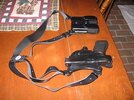I have always preferred a 124 gr bullet with around 1200-1250 fps for SD purposes. That is what NATO specs call for. AND real world 357 mag loads from 3" to 4" barrels are pushing a 125 gr bullet at 1250-1300 fps. That load has proven to be effective and 50 fps slower from a 9mm should do the same thing.
When I find it at a decent price I prefer 124 gr FMJ for practice. But I still shoot more 115 gr at the range because it is so pletniful and cheap. At typical handgun ranges I don't think it really matters that I use 115's for practice.
I've seen some testing of 147 gr loads at 1000-1100 fps that have me thinking that may in fact be the best option. That is what I prefer in my 9mm PCC. Some early 147 gr loads failed to expand at that speed and 147's got a bad rap. Newer bullet designs seem to have corrected that.
The 147 gr hardcast loads loaded by Buffalo Bore at 1100 fps penetrated over 60" of gel and out penetrated everything else tested, even 45 and 10mm loads. They never found the bullet, 60" of gel was all they had, and they didn't catch any of the bullets.
When I find it at a decent price I prefer 124 gr FMJ for practice. But I still shoot more 115 gr at the range because it is so pletniful and cheap. At typical handgun ranges I don't think it really matters that I use 115's for practice.
I've seen some testing of 147 gr loads at 1000-1100 fps that have me thinking that may in fact be the best option. That is what I prefer in my 9mm PCC. Some early 147 gr loads failed to expand at that speed and 147's got a bad rap. Newer bullet designs seem to have corrected that.
The 147 gr hardcast loads loaded by Buffalo Bore at 1100 fps penetrated over 60" of gel and out penetrated everything else tested, even 45 and 10mm loads. They never found the bullet, 60" of gel was all they had, and they didn't catch any of the bullets.



